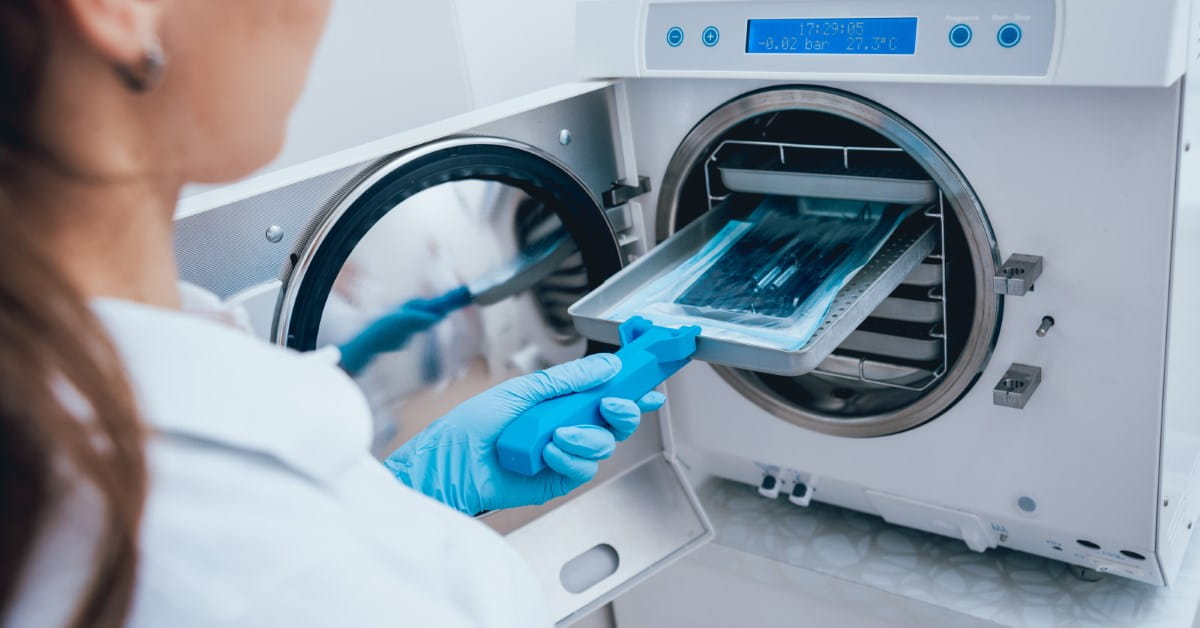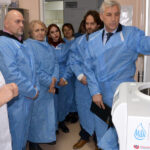In the world of healthcare, laboratory research, and industrial settings, the importance of sterilization cannot be overstated. Autoclave sterilizers play a vital role in achieving effective sterilization by eliminating harmful microorganisms and ensuring the safety of equipment and materials. In this article, we will explore the key aspects of autoclave sterilizers, their operation, types, applications, maintenance, and more.
1. Introduction to Autoclave Sterilizers
Autoclave sterilizers are specialized devices used for the complete elimination of microorganisms, including bacteria, viruses, and fungi. They utilize high-pressure steam and heat to achieve sterilization. The autoclave creates an environment where steam can penetrate the materials being sterilized, ensuring thorough decontamination. This process is highly effective and widely used in healthcare facilities, laboratories, pharmaceutical industries, and other settings that require sterile conditions.
2. How Autoclave Sterilizers Work
Autoclave sterilizers work on the principle of moist heat sterilization. The process involves three essential factors: heat, pressure, and steam. The autoclave chamber is sealed to create a pressurized environment. Steam is then introduced into the chamber, raising the temperature and pressure. The combination of high heat and pressure destroys the microorganisms present on the items being sterilized, ensuring their complete eradication. The effectiveness of the sterilization process is determined by the duration and temperature of exposure.
3. Types of Autoclave Sterilizers
There are several types of autoclave sterilizers available, each catering to specific needs and applications. The common types include:
Gravity Autoclaves

Gravity autoclaves are the most basic type and operate by using gravity to remove air from the chamber. These autoclaves are suitable for general sterilization purposes and are commonly found in smaller healthcare facilities, dental clinics, and veterinary practices.
Pre-vacuum Autoclaves
Pre-vacuum autoclaves, also known as vacuum-assisted autoclaves, use a vacuum pump to remove air and create a vacuum inside the chamber before steam is introduced. This type of autoclave is highly efficient and ideal for sterilizing porous materials, fabrics, and delicate instruments.
Steam Flush Pressure Pulse (SFPP) Autoclaves
SFPP autoclaves are designed to sterilize items that are difficult to penetrate with steam, such as wrapped instruments and certain types of packaging. They use a series of steam flushes and pressure pulses to ensure efficient sterilization.
Pass-through Autoclaves
Pass-through autoclaves are specifically designed for applications where items need to be transferred between clean and sterile areas without compromising the sterile environment. These autoclaves have separate chambers for loading and unloading, ensuring proper containment.
4. Applications of Autoclave Sterilizers
Autoclave sterilizers find applications in various fields where sterilization is crucial. Some common applications include:
Medical and Healthcare Facilities
Autoclave sterilizers are extensively used in hospitals, clinics, and medical research facilities to sterilize surgical instruments, medical devices, glassware, and laboratory equipment.
Laboratory Research
Research laboratories rely on autoclave sterilizers to ensure the sterility of culture media, glassware, petri dishes, and other laboratory supplies.
Pharmaceutical Industry
The pharmaceutical industry utilizes autoclave sterilizers for sterilizing drug formulations, production equipment, and packaging materials to maintain the integrity and safety of pharmaceutical products.
Veterinary Practices
Veterinary clinics and hospitals employ autoclave sterilizers to sanitize surgical instruments, dental equipment, and animal cages, preventing the spread of infections among animals.
Food and Beverage Industry
In the food and beverage industry, autoclave sterilizers are used to sterilize cans, bottles, and packaging materials to ensure the safety and extended shelf life of food products.
5. Choosing the Right Autoclave Sterilizer
Selecting the appropriate autoclave sterilizer for your specific needs is crucial to ensure optimal results. Consider the following factors when making a choice:
Size and Capacity
Determine the size and capacity required based on the volume of items you need to sterilize. Consider both the chamber size and the load capacity.
Sterilization Cycle Time
Different autoclaves offer varying cycle times. Assess the average time required for sterilization and select an autoclave that aligns with your operational needs.
Sterilization Requirements
Evaluate the specific sterilization requirements of your application. Consider the types of materials, instruments, and packaging you need to sterilize.
Additional Features and Safety Measures
Explore additional features such as programmable cycles, temperature monitoring, drying options, and safety features like door interlocks and pressure relief valves.
6. Operating an Autoclave Sterilizer
Operating an autoclave sterilizer requires proper understanding and adherence to specific guidelines. Here are the general steps involved:
Preparing the Load
Ensure that the items to be sterilized are properly cleaned, sorted, and arranged in a way that allows effective steam penetration.
Loading the Autoclave
Load the items into the autoclave chamber, taking care not to overcrowd the space and allowing adequate circulation of steam.
Setting Parameters
Set the desired sterilization parameters such as temperature, pressure, and duration based on the specific requirements of the items being sterilized.
Initiating the Cycle
Start the sterilization cycle and closely monitor the autoclave throughout the process, ensuring that the parameters are maintained.
Post-Sterilization
After completion of the sterilization cycle, allow the items to cool down before removing them from the autoclave. Handle the sterilized items with proper care to maintain their sterility.
7. Maintenance and Care of Autoclave Sterilizers
Regular maintenance and care are essential to ensure the longevity and optimal performance of autoclave sterilizers. Here are some key maintenance practices:
Routine Cleaning
Clean the autoclave chamber, trays, and gaskets regularly to remove any residue or debris that may hinder the sterilization process.
Preventive Maintenance
Follow the manufacturer’s guidelines for routine maintenance tasks such as inspecting and lubricating door seals, checking pressure valves, and verifying temperature accuracy.
Water Quality Management
Pay attention to the water quality used in the autoclave. Ensure that the water meets the required standards and regularly check and clean the water reservoir or boiler.
Calibration and Validation
Periodically calibrate the autoclave to ensure accurate temperature and pressure readings. Validate the sterilization cycles to ensure they meet the required standards.
8. Common Challenges and Troubleshooting Tips
Despite their effectiveness, autoclave sterilizers may encounter certain challenges. Here are some common issues and troubleshooting tips:
Inadequate Sterilization
If sterilization is inadequate, ensure that the items are properly loaded, allowing sufficient steam penetration. Check if the correct sterilization parameters are set.
Wet or Moist Items
Wet or moist items after the sterilization cycle may indicate excessive moisture or inadequate drying. Adjust the drying time or consider using a drying program if available.
Leaks or Steam Escaping
Leaks or steam escaping from the autoclave can compromise sterilization. Check for damaged seals, gaskets, or valves and replace them if necessary.

Error Messages or Malfunctions
Error messages or malfunctions may require troubleshooting according to the manufacturer’s instructions. Contact technical support if needed.
9. Advancements in Autoclave Technology
Over the years, autoclave technology has witnessed significant advancements, leading to improved efficiency, reliability, and user-friendly features. Some notable advancements include:
Automated Controls
Modern autoclaves feature advanced automation, allowing for programmable cycles, precise control of parameters, and digital monitoring of sterilization processes.
Enhanced Safety Features
Newer autoclaves incorporate enhanced safety measures, such as automatic door locking systems, pressure relief valves, and alarms for abnormal conditions.
Energy Efficiency
Energy-efficient autoclaves are designed to minimize power consumption and water usage, contributing to sustainability and cost savings.
Connectivity and Data Logging
Certain autoclaves now offer connectivity options, allowing remote monitoring, data logging, and integration with facility management systems.
10. Safety Precautions for Autoclave Sterilization
Autoclave sterilization involves high temperatures and pressure, requiring strict adherence to safety precautions. Here are some essential safety guidelines:
Personal Protective Equipment (PPE)
Always wear appropriate PPE, including gloves, lab coats, and safety glasses, when handling the autoclave, loading/unloading items, or conducting maintenance.
Proper Ventilation
Ensure that the autoclave area is well-ventilated to prevent the accumulation of steam and heat. Follow any ventilation requirements specified by the manufacturer.
Follow Operating Instructions
Strictly follow the manufacturer’s operating instructions and guidelines. Familiarize yourself with emergency shutdown procedures and location of safety equipment.
Regular Training and Awareness
Provide regular training to personnel handling autoclaves, emphasizing safe operating practices and the potential risks associated with the equipment.
11. Environmental Impact and Sustainability
The environmental impact of autoclave sterilizers should be considered, particularly in terms of water consumption and energy usage. Manufacturers are continually working towards developing more eco-friendly autoclave models with improved efficiency, reduced water consumption, and better waste management systems. When choosing an autoclave, look for energy-efficient options and consider implementing water recycling systems to minimize environmental footprint.
12. Future of Autoclave Sterilizers
As technology continues to evolve, the future of autoclave sterilizers looks promising. Advancements such as improved connectivity, artificial intelligence-based controls, and more sustainable designs will likely shape the future of autoclave sterilization. These developments aim to enhance sterilization efficiency, user-friendliness, and sustainability, further ensuring the safety of patients, researchers, and industrial workers.
13. Conclusion
Autoclave sterilizers are indispensable tools in achieving effective sterilization in various industries. Their ability to eliminate microorganisms and maintain sterile conditions is critical for the safety and success of healthcare procedures, laboratory research, and industrial processes. By understanding the different types, applications, maintenance requirements, and safety measures associated with autoclave sterilizers, users can make informed choices and optimize their sterilization practices.
14. Frequently Asked Questions
Q1: How often should I clean my autoclave?
A1: Regular cleaning of the autoclave is essential. It is recommended to clean the autoclave chamber, trays, and gaskets after each use to prevent the buildup of residue or contaminants.
Q2: Can autoclave sterilization kill all types of microorganisms?
A2: Autoclave sterilization is highly effective and capable of eliminating a wide range of microorganisms, including bacteria, viruses, fungi, and spores.
Q3: Can I sterilize liquids in an autoclave?
A3: Liquids can be sterilized in an autoclave, but it is crucial to follow specific guidelines and use appropriate containers to prevent spills or breakage during the sterilization process.
Q4: What is the average cycle time for autoclave sterilization?
A4: The average cycle time for autoclave sterilization can vary depending on factors such as the load size, type of items being sterilized, and the autoclave model. It typically ranges from 15 to 45 minutes.
Q5: How often should I validate the sterilization cycles?
A5: Sterilization cycles should be validated periodically to ensure they meet the required standards. The frequency of validation depends on regulatory requirements and the specific industry standards applicable to your field.



